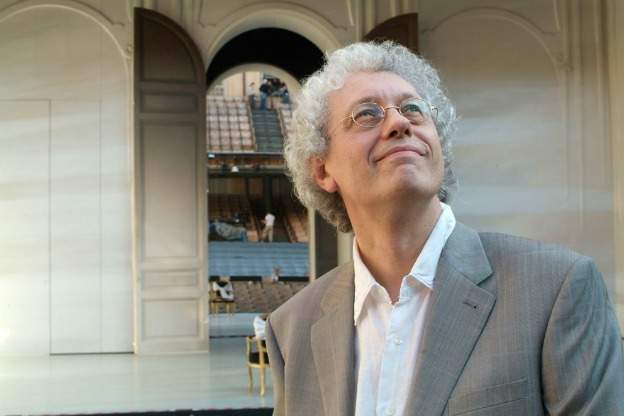
A recording that is a little out of our usual realm, a 2014 Aeon release features Bernard Foccroulle playing his own contemporary music composed specifically for historical organs.
Historical vs. Modern
In his liner notes, Foccroulle speaks of his fascination with historical instruments and explains his attraction to the project. Historical instruments had no uniform standard, often giving them more pronounced personalities than some more recently built instruments. Yet, as always, there is a reason reason behind change—ancient instruments, because of their unique qualities can impose limitations, being as they are, suited for a highly specific repertory. Many old instruments have a reduced compass, fewer manuals, limited or non-existent pedals, fewer stops. All that without even broaching the can of worms that is keyboard tuning and temperament systems that varied not only from organ to organ, but church to church, and city to city.
With newer organs, the possibilities are endless, and in fact, a great many of the compositions composed this century and last are all but unplayable on historic organs. Yet, breadth of possibility can sometimes quash a depth of expression. Foccroulle, keen on making new music, but not wanting to sacrifice that interesting personality of the old instruments has in recent years built a repertory that takes into account both the specific strengths and constraints of historical instruments.
Early Models
Most of his music on this recording references an earlier composer, or practice. The opening track, for example, titled appropriately enough Toccata, was composed in 2001. It was conceived for a North-German organ design, like the organs Dietrich Buxtehude might have encountered. With a little bit of analytical listening, you can pick up on traces of the 17th century stylus phantasticus, and embedded in the piece are quotes from Lutheran chorale melodies, 'Komm Heiliger Geist, Herre Gott' and 'Mit Fried und Freud ich fahr dahin.' It’s played here on the organ from St. Catherine’s Church in Hamburg.
A highlight of the disc is the Nigra sum composed in 2012. It’s performed on a Picard organ built in 1741. In addition to organ, the piece also calls for a soprano and cornetto in the score. On this CD, Foccroulle is joined by his daughter Alice, and corenettist Lambert Colson. The instrumentation alone—organ in mean-tone, soprano, cornetto, recall Renaissance and early Baroque timbre’s. The text, too, Nigra Sum, taken from the Song of Songs was a favorite of earlier composers, most famously in Monteverdi’s Vespers.
The bulk of this recording is dedicated to Foccroulle’s 2005 composition called Spiegel a work ‘in dialogue with Arnold Schlick’s Salve regina.’ Just to refresh your memory, Arnolt Schilck was the famous blind composer and organist of renaissance Germany, who is probably known best for his 1511 treatise on organs and organ building titled Spiegel der Orgelmacher und Organisten. Schlick also published a collection of music in 1521 from which comes the Salve Regina that inspired Foccroulle’s composition. Spiegel is written for and performed here on the van Covelens choir organ of 1511.
Bernard Foccroulle
This recording is a departure for Bernard Foccroulle. The Belgian organist has in the past recorded the complete organ works of J.S. Bach, and more recently, Buxtehude’s complete organ music. With this recording, Foccroulle proves himself equally adept beyond those parameters.









